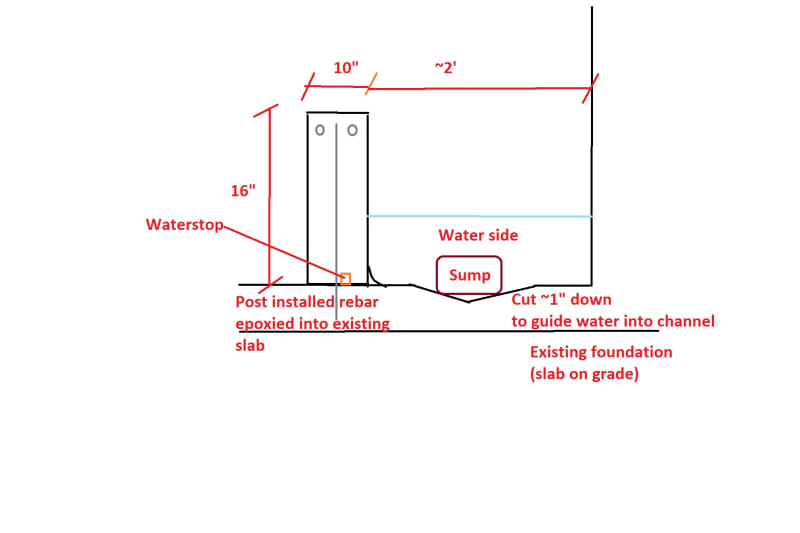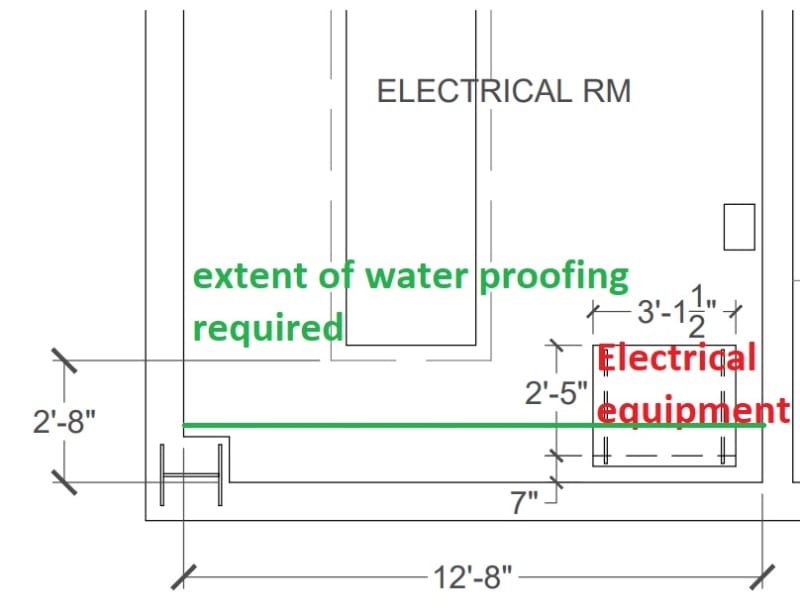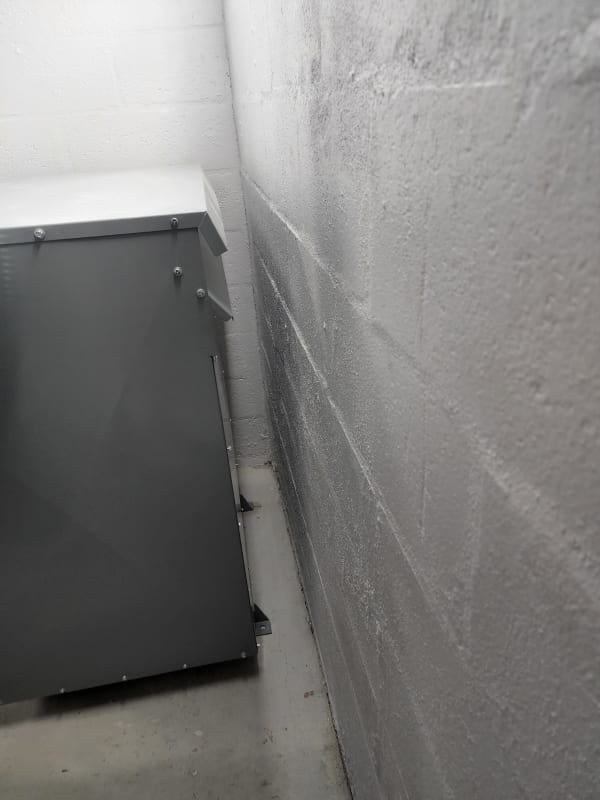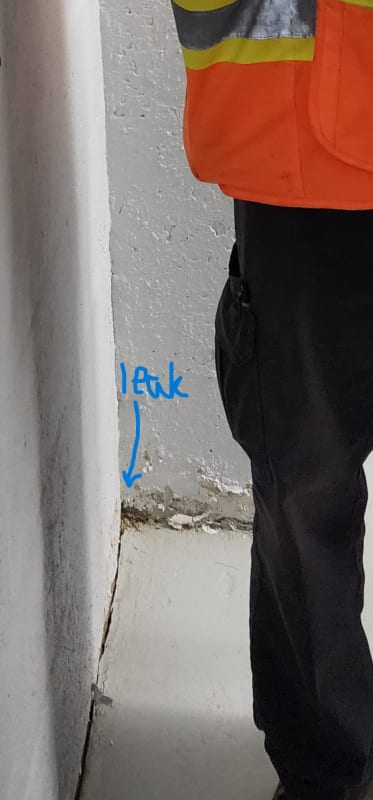psychedomination
Structural
Hi there,
I have a project where a portion of the basement of a commercial building is below the water table when there is very heavy rain (not a common occurrence). The water seemed to be leaking out of the joint between the column and the wall and was going under the slab and also soaking the floor on top of the slab.
The room that this is happening in is storing very critical electrical components, so the client wants to get this sorted. They’ve requested a bund type wall to contain the water with a sump pump inside that will pump the water into a waste line above.
In theory the bund shouldn’t be that difficult, I’ll put a few dowels into the existing slab and put a water stop in the bund wall. The wall won’t need to be very high, perhaps only 16” or so. I’m thinking of doing something like this :

First question is whether I should put in two water stops?
Second questions is if it’s possible to do something like this using CMU block instead of forming up a RC wall? I’m guessing a CMU wall wouldn’t work with the waterstop but would appreciate guidance.
Now, bund wall aside, there is another issue where there is a large piece of electrical equipment that is only about 5” to 7" away from the wall in a specific location where the bund wall would’ve needed to be. This would be extremely expensive to move as it is hooked up to some hard-wired electrical lines. How can I waterproof this location when I only have ~5” of clearance? I assume whatever is done here would need to tie into the 2’ wide new bund wall? Any advice would be greatly appreciated.
I’ve included a plan for context below :

Any guidance on this approach or if you think there is a better one, please let me know.
Some additional photos for context :


I have a project where a portion of the basement of a commercial building is below the water table when there is very heavy rain (not a common occurrence). The water seemed to be leaking out of the joint between the column and the wall and was going under the slab and also soaking the floor on top of the slab.
The room that this is happening in is storing very critical electrical components, so the client wants to get this sorted. They’ve requested a bund type wall to contain the water with a sump pump inside that will pump the water into a waste line above.
In theory the bund shouldn’t be that difficult, I’ll put a few dowels into the existing slab and put a water stop in the bund wall. The wall won’t need to be very high, perhaps only 16” or so. I’m thinking of doing something like this :

First question is whether I should put in two water stops?
Second questions is if it’s possible to do something like this using CMU block instead of forming up a RC wall? I’m guessing a CMU wall wouldn’t work with the waterstop but would appreciate guidance.
Now, bund wall aside, there is another issue where there is a large piece of electrical equipment that is only about 5” to 7" away from the wall in a specific location where the bund wall would’ve needed to be. This would be extremely expensive to move as it is hooked up to some hard-wired electrical lines. How can I waterproof this location when I only have ~5” of clearance? I assume whatever is done here would need to tie into the 2’ wide new bund wall? Any advice would be greatly appreciated.
I’ve included a plan for context below :

Any guidance on this approach or if you think there is a better one, please let me know.
Some additional photos for context :



